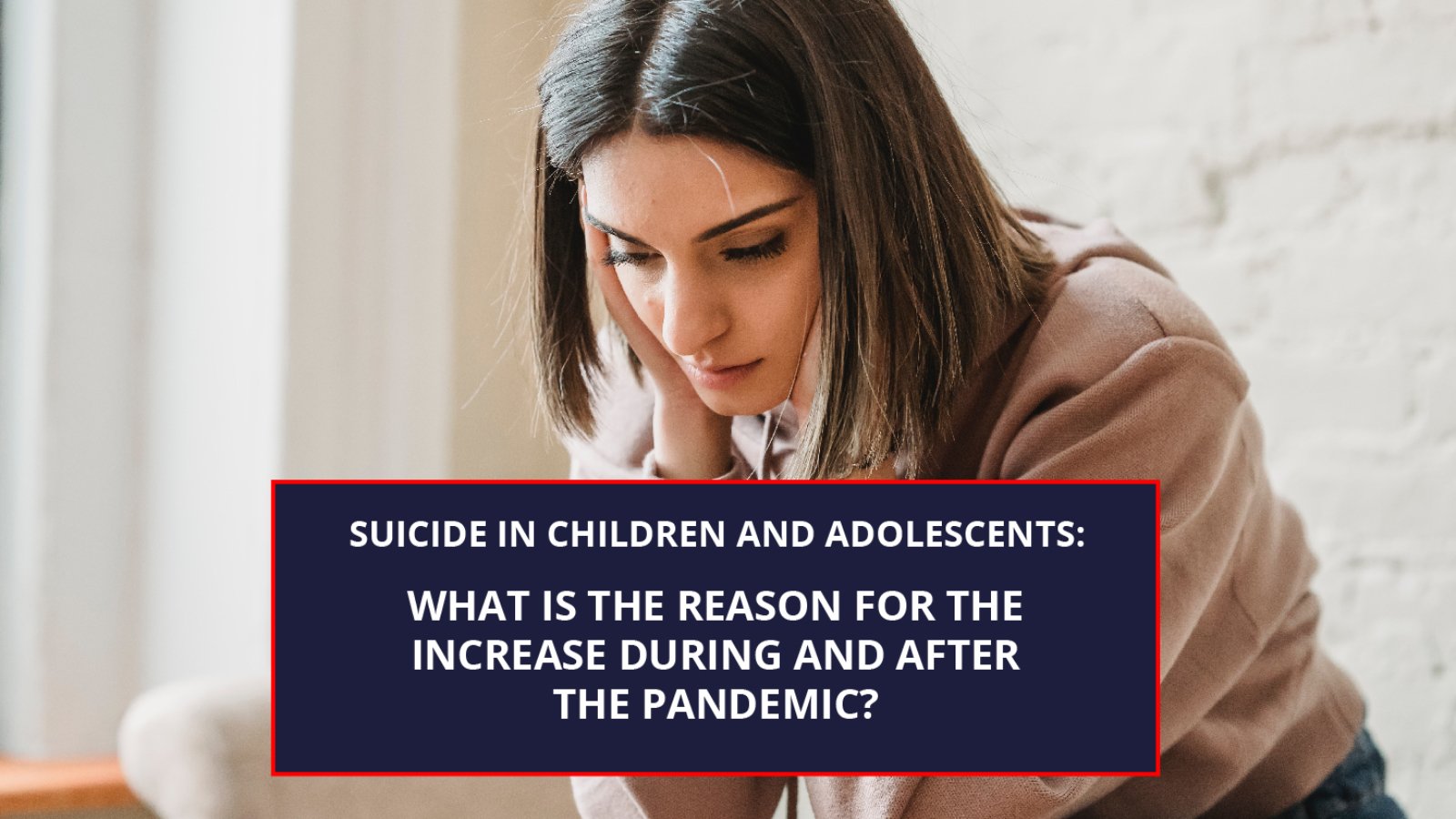The high suicide rate in children and adolescents is one of the devastating facts aggravated by the COVID-19 pandemic. The rates recorded between 2020 and 2021 are alarming. And it is even more worrying that one more year has passed and the aftermath seems to have no end.
What could be so harmful for a child or adolescent to think about ending his or her life? Well, it is just the beginning. This is a very sensitive subject and I want us to understand it together.
Did suicide occur in children before the pandemic?
The answer is yes. Unfortunately, the occurrence of suicide in children and adolescents has been recorded for many years. The associated causes have been diverse and despite the efforts of parents, caregivers and interested organizations, it has not been possible to avoid it.
In records from UNICEF’s State of the World’s Children 2021, we find that the child population was already showing a need for mental health care before the pandemic. Also other statistical media make comparative averages with infant suicide rates in the year 2019.
Why did the rates increase during the pandemic?
It is very important to mention that, based on the above data, we cannot look at the arrival of the pandemic as the cause of the suicides. But, yes, as a trigger for these to continue happening and in a higher percentage, according to the statistics.
Now, before committing suicide, the person (of any age) will have experienced an altered mental condition; that is to say, far from healthy conditions and with poor self-esteem.
Of course, confinement (social isolation), uncertainty and the fatal losses of family members and thousands of people worldwide were ideal conditions to cause anxiety, restlessness and depression. Undoubtedly, the mental conditions conducive to suicide in children and young adults.
Confinement, Uncertainty and Death: A Child’s Eye View
Those of us who know about human development and behavior know that children are especially sensitive to changes in their routine and habits. Thus, isolating them from their loved ones, friends and activities of their liking is not easy for a child or a young teenager.
Infants are beginning to explore their environment, and young adolescents are eager for independence, freedom and integration. How do you endure isolation and control these needs that are part of them?
I invite you to put yourself in the shoes of a child and to think about the following:
- How do I limit my desire to run (and others) to the space of the house and without friends or people other than mom and dad?
- Add the question, “What is going on and when is this going to end?” and wait for the response from parents or adults who are noticeably overwhelmed and in crisis; anxious and, many times, angry.
- “Nothing will ever be the same because many of them I will never see again.”
- “Mom, Dad, are we going to die too?” and wait for the response from parents or adults angered by so many questions you ask. You feel that your concerns “take time away” from them to think about what to do, and besides, they are more overwhelmed than you are.
- How would you handle it? Respond in the same position as a child.
The unknown trigger of suicide in children
The crisis of the inner self and therefore of the family is the root of suicide in children and young people. And, it is not talked about often because it is still a stigmatized subject.
It is no secret that we live in a world where the meaning of life has been driven by having and doing. The pandemic suppressed everyone from what they did and had; jobs, games, entertainment, studies, titles, money, control, status, security, vices. This was the greatest uncertainty.
Each member of the family was immersed in their own activities and their own experiences and individualities. The pandemic brought them all together in one place, the home, and in theory this should have been beneficial. But, with it, deep personal and family voids began to surface.
This emergency situation in which everyone needed to feel understood, listened to and valued, made them feel attacked, singled out, questioned, ignored, minimized. Not that this didn’t take place before the pandemic, but in the hustle and bustle of everyday life it had not been as noticed.
Sweet or bitter company at home
Being at home with those we love should be a sweet companionship for everyone, especially for our little ones. When the opposite happens, it generates in young people a sense of loneliness that has a profound impact on their worth and dignity.
When the feeling of worthlessness remains in a young and less mature mind there is a tendency to suicide. Now you will understand why, after confinement, suicide in children and adolescents has increased.
What happens after the pandemic?
The health crisis still remains, but we are resuming our activities by adopting and maintaining biosecurity measures. The confinement has ceased, the uncertainty has diminished; however, the aftermath remains and child suicides continue.
How to restart mental health? By giving greater presence to love and taking back the true meaning of life. The pandemic has shown that having and doing are not essential to being fulfilled; let us be guided by the presence of love, and God is love (1 Juan 4.8; Colossians 3.14).
It’s in the lack of closeness, listening, support, coverage and that feeling of lack of love that precedes the thought of suicide in children and adolescents. On the other hand, love is what gives meaning to people’s lives (1 Corinthians 13.2).
In that same love I want to extend to you the help you need in any situation of difficulty with your children and your family. You can contact me at this number 407 618 0212.


